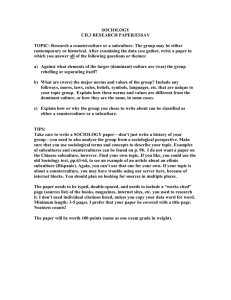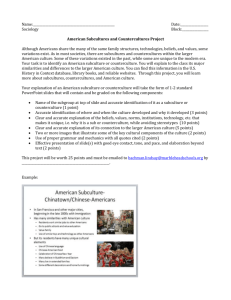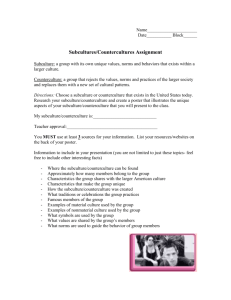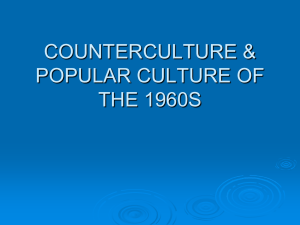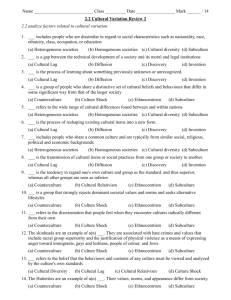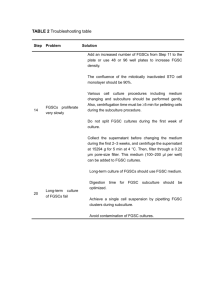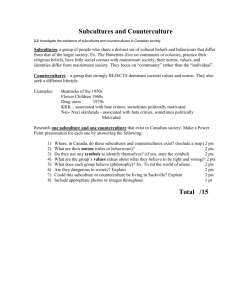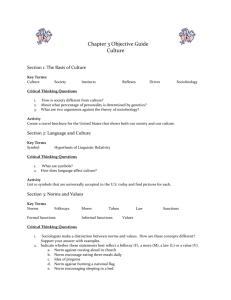Subculture or Counterculture?
advertisement
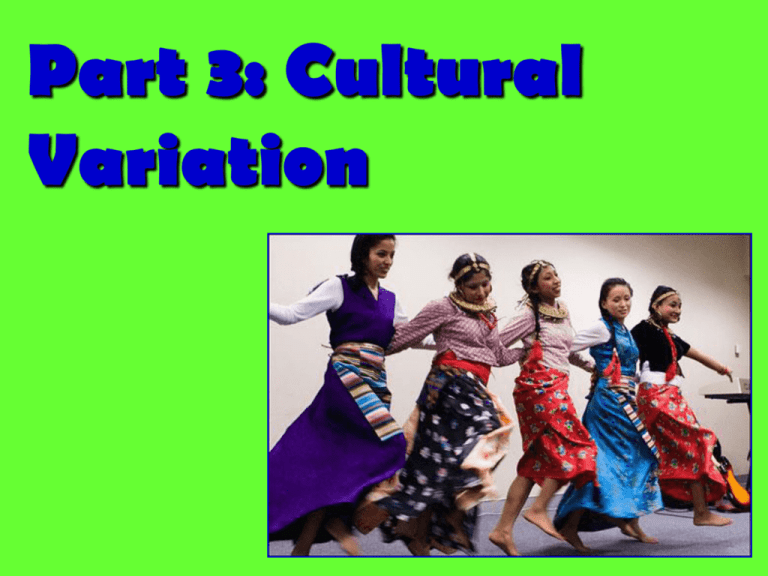
Part 3: Cultural Variation What do we have in Common? • Cultural Universals: common features found in all cultures • 1940’s study results: Body adornment, cooking, dancing, family, feasting, forms of greeting, funeral ceremonies, gift giving, housing, language, medicine, music, myths/folklore, religion, sports and toolmaking Ethnocentrism/Cultural Relativity • Ethnocentrism: • The practice of judging another culture by the standards of one’s own culture • Culture Shock: Personal disorientation accompanying exposure to an unfamiliar way • Cultural Relativity: • The practice of evaluating any culture by its own standards Subculture • DEFINITION: cultural patterns that differentiate some segment of a society’s population • Can be based on: • Age, residence, sexual preference, ethnicity and occupation Counterculture • DEFINITION: cultural patterns that strongly oppose conventional culture • Likely to question the morality of the majority group & to engage in some form of protest Subculture or Counterculture? Subculture or Counterculture? Subculture or Counterculture? Subculture or Counterculture? Subculture or Counterculture? Subculture or Counterculture? Subculture or Counterculture? Subculture or Counterculture? Subculture or Counterculture? Subculture or Counterculture? Subculture or Counterculture? Subculture or Counterculture? Subculture or Counterculture? Cultural Change • Cultural change is continuous • Cultural Lag: • Cultural elements change at varying rates; often disrupts a cultural system Cultural Change • Causes of cultural change: • Social Movements • Invention/Technological Advances • Population Changes • Physical Environments • Diffusion- Globalization Part 4: Theoretical Analysis of Culture Structural-Functionalism • A FUNCTIONALIST view of culture: • Draws on the philosophical doctrine of idealism; holds that ideas & nonmaterial elements are the basis of human reality • Focus on cultural universals Conflict Theory • A CONFLICT view of culture: • Inequality among different groups of people creates social conflict within a culture • Leads to social and cultural tensions Symbolic-Interactionism • A SYMBOLIC view of culture: • Humans constantly negotiate their cultural surroundings, especially with regards to symbols, values and beliefs • No two people interpret their culture in the same way • Leads to tension and misunderstanding
